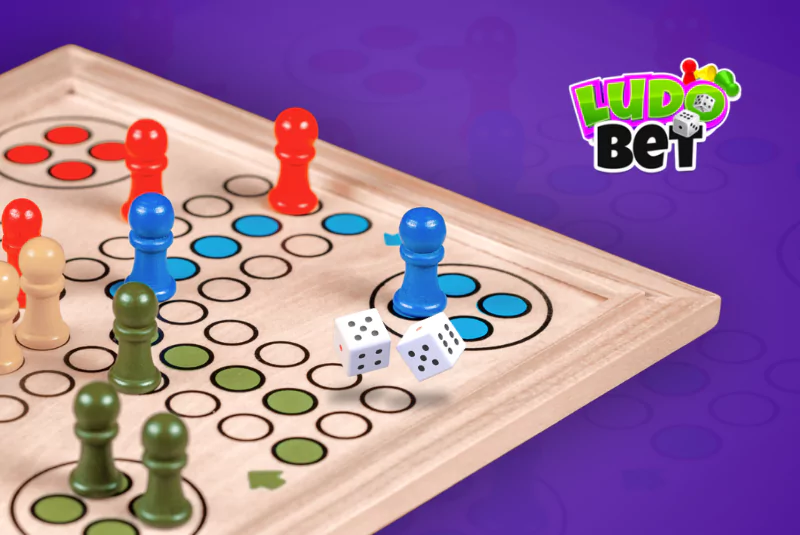Have you ever had a heated Ludo match at home where everyone was shouting – “You cheated!”? If yes, you’re not alone. In almost every Indian household, Ludo is more than just a game – it’s an emotion. From long train journeys to lazy Sunday afternoons, Ludo has always been there to bring people together. But when the fun turns into a serious match, knowing the exact rules becomes super important.
In this blog, we’ll take you through the real Ludo game rules, so that the next time you play, you play it right and win with confidence.

What Is the Main Goal in Ludo?
The main objective of Ludo is to move all four of your tokens from your starting area (called the base) to the center of the board (called the home triangle) before your opponents do. The first player to get all four tokens into their home wins the game.
Sounds easy? Wait until the dice get involved.
Basic Ludo Rules You Should Know
Ludo is played by 2 to 4 players, each assigned one of four colors — red, green, blue, or yellow. Here are the rules that apply in both traditional and online versions:
1. Starting the Game
Each player begins with all four tokens in their starting area. To bring a token onto the board, you must roll a six.
Once you roll a six, you can move a token to your starting square and roll again. If you roll another six, you get a second bonus roll but if you roll three sixes in a row, your turn is skipped.
2. Moving Around the Board
After getting your tokens on the board, you’ll move them clockwise based on your dice rolls. Each turn allows you to advance any one of your tokens by the number you roll.
You can only move tokens that are already out of the base, unless you roll another six to bring more tokens out.
3. Capturing Opponents
If your token lands on a square occupied by an opponent’s token, you “capture” their piece and send it back to their base. That token must roll another six to re-enter the board. Capturing is one of the key tactical plays in Ludo, adding an element of offense to an otherwise defensive game.
However, safe squares exist – these are usually marked and protect tokens from being captured. If a token sits on a safe square, it cannot be attacked.
4. Home Stretch
Once a token completes the full loop around the board, it enters the colored column leading to the center — your “home.” You must roll the exact number needed to move each token into the center square. Overshooting is not allowed, and you’ll need to wait until you roll the correct number.
The player who moves all four tokens to the home square first wins the game.

Key Differences in Online Ludo Rules
Online Ludo follows the same core principles as the classic board game, but there are a few tweaks that make it faster, fairer, or more competitive.
Turn Timers
Most online versions use a turn timer, usually 10–30 seconds per move to keep the game flowing and prevent delays.
Auto-Move
If a player doesn’t make a move in time, the system may auto-move a token based on the best possible action. Repeated timeouts can lead to a player being removed from the game.
Fair Dice Roll Algorithms
Online Ludo uses algorithms to simulate dice rolls, aiming for fairness. Unlike physical dice, these cannot be manipulated — although many players feel luck still plays a role.

Quick Modes
Some apps offer shorter versions of the game, such as:
- 2-token games instead of 4.
- Timed matches where the player with the most tokens home when the timer runs out wins.
- Points-based games, where tokens earn points for moving, capturing, or reaching home.
These modes are designed for quicker play and added variety.
Tips to Improve Your Game
Mastering Ludo isn’t just about luck. Here are a few quick strategies:
- Spread your tokens: Don’t move only one token all the way — keep multiple in play to improve flexibility and safety.
- Secure safe zones: Position your tokens on safe squares when you can.
- Block paths: Use multiple tokens to control the board and delay your opponents.
- Time your risk: If an opponent’s token is close behind, sometimes it’s smarter to wait than to advance and risk a capture.
Online platforms like LudoBet make it easier than ever to enjoy Ludo from your phone.

Final Verdict
Ludo is one of those rare games that’s easy to learn but hard to master. By understanding both the traditional and online Ludo rules, you’ll not only enjoy the game more, you’ll play it better.
So the next time you roll a six, remember: it’s not just a game of chance – it’s a game of choices, timing, and strategy.






